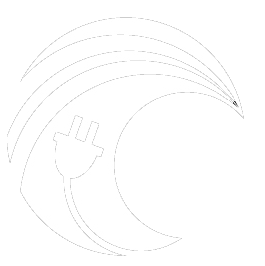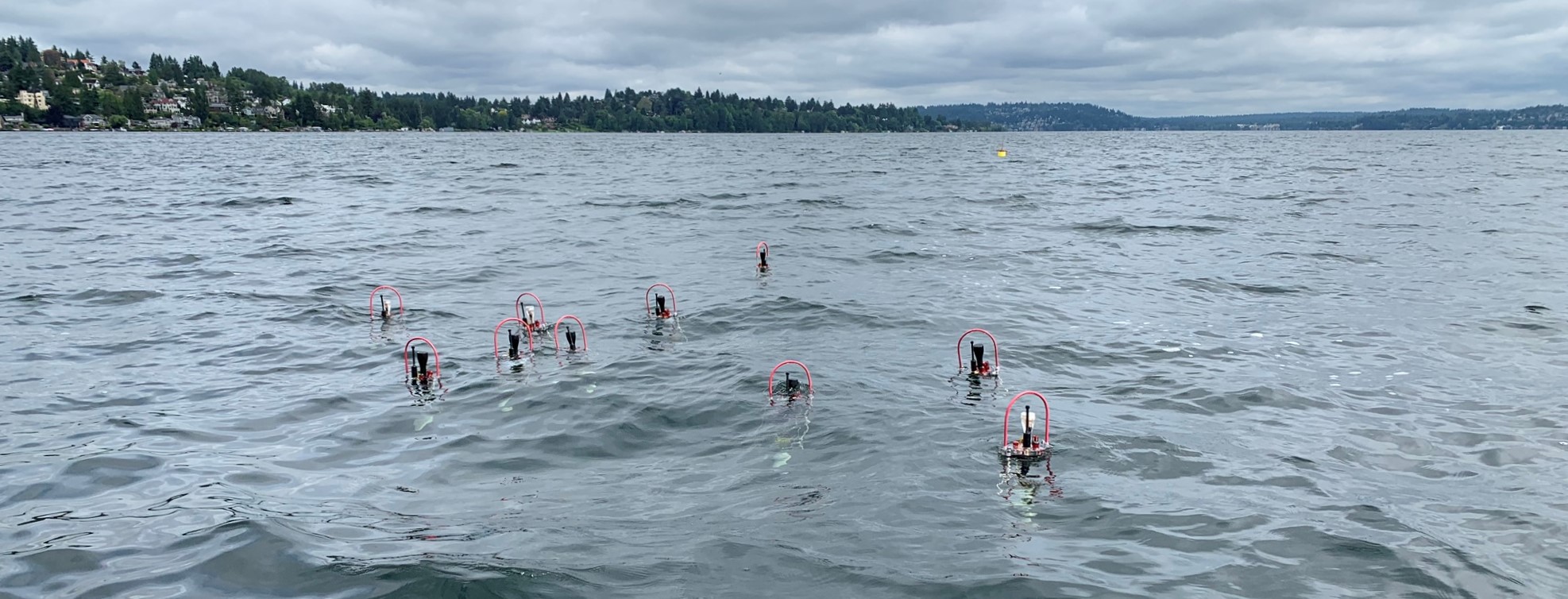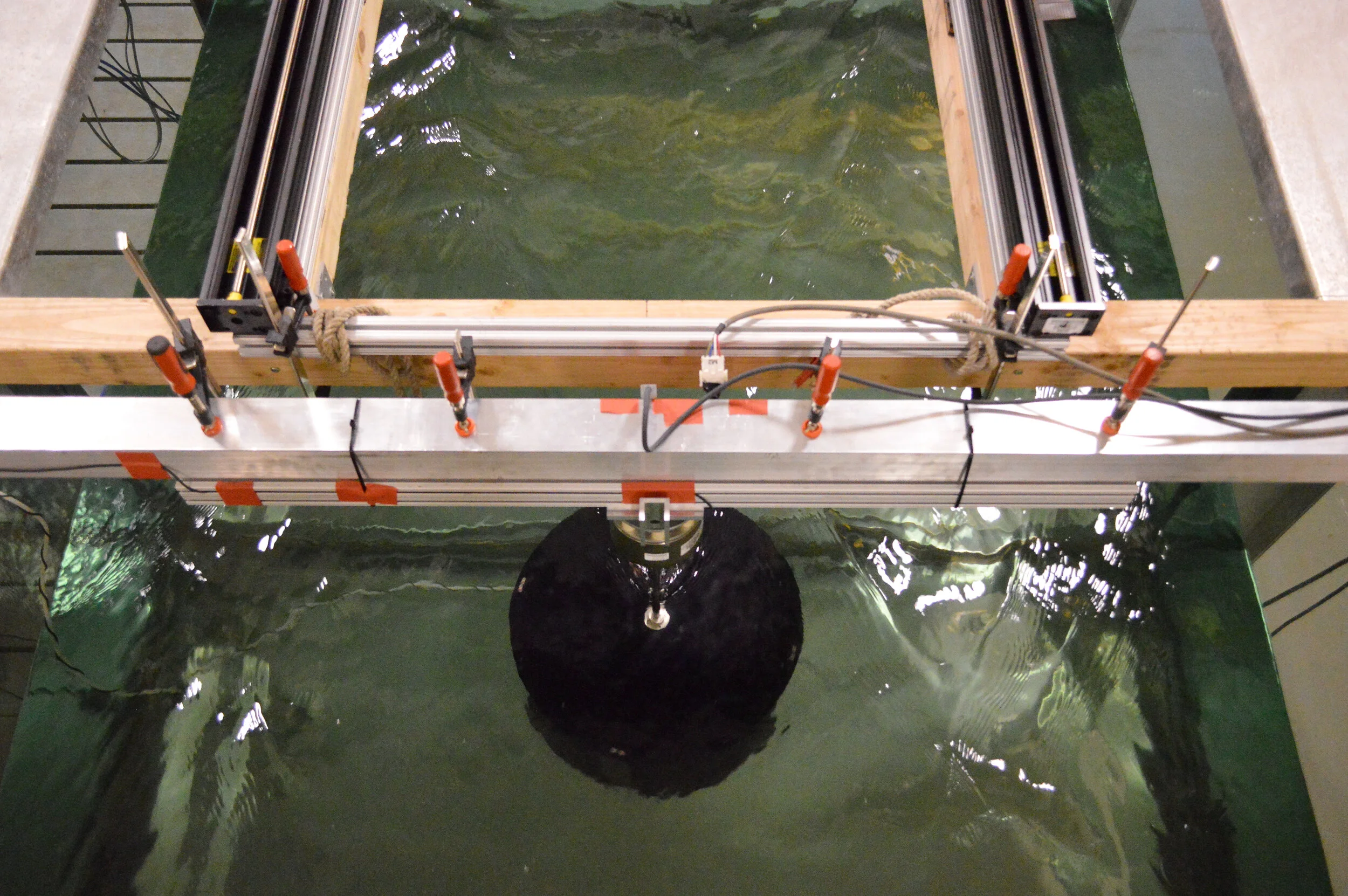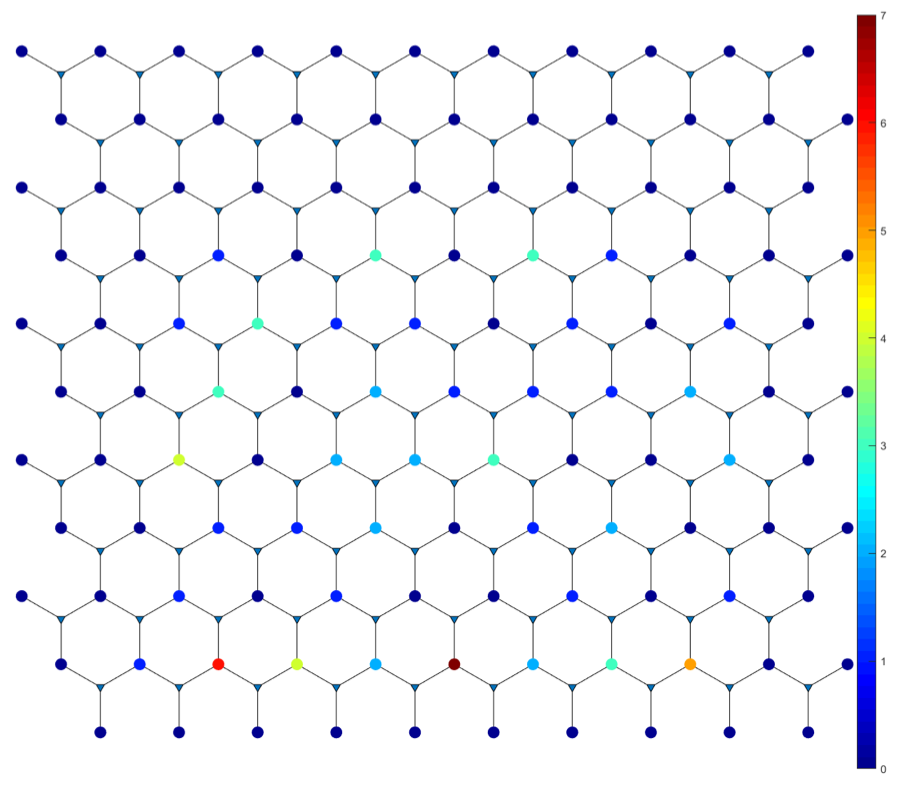PMEC researchers are most active in six primary areas: Marine Energy Resource Characterization; Wave Energy Conversion Technology; Current Energy & Turbine Technology; Marine Operations; Environmental Effects; and Society & Policy.
PMEC is structured to close key gaps in understanding through the support of baseline studies, on-going monitoring, and setting the technical, ecological, and human dimensions standards for marine energy projects.
Marine Energy Resource Characterization
Understanding marine energy resources is fundamental to their utilization. PMEC research has expanded our understanding of waves and currents, particularly the extremes that impose the highest structural loads on conversion technologies.
The µFloat project (pronounced “microFloat”) is an underwater float - a trackable, drifting sensor package - that is inexpensive enough to be deployed in swarms to perform simultaneous, distributed measurements in energetic tidal currents.
Wave energy Conversion Technology
Wave energy is the least utilized form of renewable energy and a challenging systems engineering problem that encompasses hydromechanics, control, and advanced mathematics. Research at PMEC seeks to develop more cost-effective approaches to harnessing this resource through simulation, laboratory experiments, and field trials.
PMEC researchers are modeling and analyzing farms of floating oscillating water column wave energy converters to better understand the best ways to deploy and operate them in ocean conditions.
Because wave energy conditions are widely variable, a wave energy converter's (WEC) control system should ideally be able to instantaneously adjust to marine conditions to increase power capture and improve survivability. But non-linear WEC control approaches that integrate advanced logic and machine learning approaches need further development and testing to be viable for commercial use.
Current Energy & Turbine Technology
The technology to convert tidal, river, and ocean currents to electricity has heavily leveraged advances in wind energy, but significant challenges remain. PMEC research has led to breakthroughs in the performance of individual turbines and dense arrays.
Just because it performs in the flume, doesn’t mean it’ll perform in open water. PMEC experiments are helping to accurately extrapolate lab data to commercial scale.
A series of experiments in the Alice C. Tyler flume at the University of Washington assessed performance of a cross-flow turbine under speed- or torque-regulated flow.
The team set out to evaluate changes in cross-flow turbine power output and structural loads at various stages of barnacle colonization on turbine blades.
Marine operations
Anyone who has spent time at sea understands the difficulty of working in the marine environment. PMEC researchers are working to develop new marine energy use cases and approaches to installation, operations, and maintenance that leverage advances in machine learning, analytics, robotics, autonomy and other emerging technologies.
Floating offshore wind devices have great potential for energy generation in deep water. This PMEC project set out to optimize mooring and anchoring in an array of floating wind turbines by identifying which anchors in an array are most important to strengthen.
Environmental Effects
PMEC researchers are developing leading-edge methods and technologies to reduce uncertainty about the environmental effects of marine energy technologies. These can help to rapidly and cost-effectively identify risks that require mitigation and "retire" those that do not, assisting regulators in making evidence-based decisions regarding the potential impacts of marine energy projects.
Drifting Acoustic Instrumentation SYstems (DAISYs) are purpose-built to accurately measure the sound generated by marine energy converters.
3G-AMP prior to deployment at PNNL in 2019. The sensor packages are can be tailored to address specific environmental concerns and the deployment hardware is custom-designed for the application.
PMEC researchers are synthesizing existing information and conducting additional field sampling on fish populations near Yakutat, Alaska, in preparation for a potential wave energy installation.
Sound produced by marine energy converters may be audible to marine life, but measuring these sounds is difficult. DAISYs are our answer: low-cost, accurate instrumentation specifically built for marine energy sites.
Society & Policy
Without social acceptance, proving technical feasibility and environmental compatibility cannot enable broad adoption of marine energy conversion systems. PMEC research seeks to understand and quantify the many human dimensions of marine energy.
A new survey of 2,000 California, Oregon, Washington, and British Columbia residents gives insights about west coast residents’ knowledge of, and attitudes towards, wave energy.
This summer PMEC graduate students participated in the Project Blue@Summer program; virtually mentoring high school interns through the process of writing an ocean energy-related research paper.
Video interviews discuss how PMEC researchers contribute to the larger social conversation about wave energy and social issues related to its use in coastal communities.
PMEC social scientist Shana Hirsch studies the renewable energy industry in Scotland, where marine technologies dominate, as a lens for innovation ecosystems and energy transitions across Europe and around the globe.
Want to collaborate with PMEC on a research project? Contact us at research@pmec.us.
banner video provided by Benjamin Strom
















